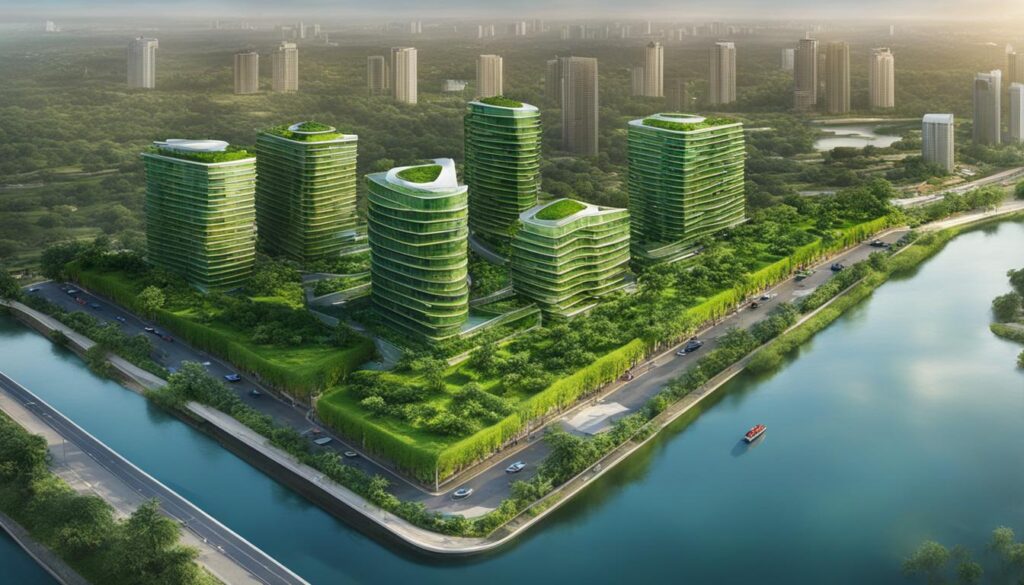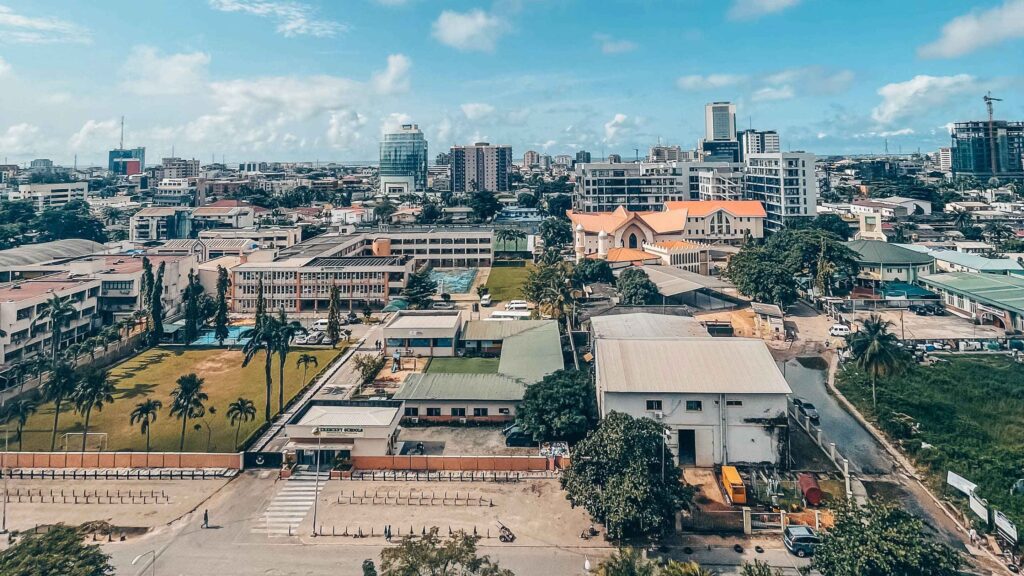Amid escalating climate threats and Nigeria’s rapid urban expansion, there’s a growing urgency to accelerate climate-smart solutions in our built environment. At the June 2025 UN climate talks in Bonn, global leaders, policy-makers, financiers, and technologists met to explore how to fast-track decarbonization and resilience in buildings and infrastructure. The key takeaway? Nigeria stands at a crucial juncture, with enormous opportunities to leap forward by harnessing innovative climate technologies.
Table of Contents

Why Focus on Buildings and Infrastructure?
Buildings are responsible for approximately one-third of global CO₂ emissions, accounting for around 37% when both operational energy use and construction materials are considered. Infrastructure—through the extraction, processing, and transport of materials like steel and concrete—contributes significantly to this footprint. Yet both buildings and infrastructure are among the most vulnerable assets in the face of climate risks, including flooding, sea-level rise, extreme heat, and structural degradation. Tackling these dual challenges—reducing emissions and building resilience—is not just urgent, but strategically vital.
Experts at Bonn emphasised that buildings offer compelling opportunities for progress: they are long‑lived assets, with retrofit and design changes delivering high impact at relatively low cost, especially in emerging economies. Underpinning success requires a unified approach—policy frameworks, technology deployment, data integration, and financing mechanisms must all be aligned.
Spotlight: Nigeria’s Climate Context
Nigeria has made key policy moves—most notably the Climate Change Act (2021), which mandates a National Climate Action Plan, carbon budgeting, and a dedicated Climate Change Fund. The country also launched an Energy Transition Plan (2022), targeting 30% renewable power by 2030 and net-zero by 2060. These set the stage, but implementation on the ground remains patchy.
Experts like Prof. Charles Inyangete identify energy-efficient buildings as a top priority; he estimates a potential 30% drop in GHG emissions through retrofits and green design adoption. Meanwhile, local authorities and codes are beginning to reflect this urgency. Recently, civil engineers called for stricter, climate-resilient building codes and the setup of an infrastructure resilience fund.
Innovative Climate Technologies in Action
Several cutting-edge solutions are gaining momentum across Nigeria:
1. Nanomembrane Window Films & Adaptive Facades
Engineer Kevin Adagha introduced nanomembrane films capable of blocking up to 95% of UV and infrared solar heat—offering low‑cost alternatives to expensive low‑E glass. This innovation slashes air‐conditioning usage and enhances occupant comfort.
Globally, climate‐adaptive building envelopes—dynamic façades that alter their thermal performance based on conditions—could reduce total energy use by up to 30%. Nigeria can learn from such technologies, tailoring them to our tropical climate.
2. Energy-Efficient Lighting and Smart Control Systems
Through LED retrofits and intelligent control systems, lighting efficiency is improving. Combine this with AI-driven HVAC and IoT sensors, and buildings can slash operational energy while enhancing comfort. Technologies such as smart grids and predictive maintenance are already being piloted and are strong candidates for wider rollout.
3. Green, Low-Carbon Materials
Dr. Sylvia Echezona Kelechi’s research into green self-compacting concrete—using fly ash, calcium carbide residue, and crumb rubber—identified mixes with significantly reduced CO₂ footprint and comparable structural performance. Such innovations could reshape Nigeria’s construction supply chain.
4. Renewable Integration: Solar, Biomass & Beyond
Urban building retrofits featuring solar PV systems have achieved financial paybacks within 6–8 years, with CO₂ savings of 50–70 tonnes per building annually. Biomass waste-to-energy applications also show 20% energy savings and 40–60 t CO₂ avoided in industrial contexts. Though wind remains less viable due to cost and infrastructure gaps, hybrid solutions could unlock synergy.
5. Green Infrastructure Techniques
The use of green roofs, constructed wetlands, and rain gardens plays a critical role in managing stormwater, reducing urban heat, and enhancing biodiversity—a lifeline for flood-prone cities like Lagos and Port Harcourt.

Tackling Barriers: Finance, Skills & Policies
Despite proven benefits, broad adoption faces notable challenges:
- High Upfront Costs: Even though solar costs have dropped by nearly 80%, affordability remains constrained for many households and SMEs.
- Technical Capacity Gaps: Deploying advanced systems demands skilled technicians—a scarce resource in Nigeria, forcing reliance on expensive foreign expertise.
- Regulatory Fragmentation: Overlapping agency mandates and weak enforcement hinder progress, despite robust legal frameworks.
- Financing Risks: Exchange rate volatility, land acquisition hurdles, and limited credit guarantees elevate perceived risks for climate infrastructure projects.
Solutions: What Nigeria Needs to Scale
To drive the adoption of climate technologies in building and infrastructure, coordinated action is required:
- Innovative Financing Instruments
- Expand green bond issuances (already rising above ₦58 billion in sovereign and corporate channels).
- Tap into carbon markets and climate funds for concessional lending.
- De-risk investments with government guarantees and policy-backed co-financing.
- Offer flexible pay-as-you-go models and low-interest loans to improve affordability.
- Launch Capacity-Building Programs
- Partner with universities, vocational institutes, and private sector players to deliver targeted training in climate-building tech.
- Facilitate knowledge exchanges with UNEP, UNFCCC, or MIT-led centres for guided implementation.
- Strengthen Regulations & Standards
- Update and enforce building codes to mandate resilience features—flood defences, coastal protection, drainage, and adaptive envelopes.
- Embed ESG principles across the construction lifecycle, from procurement to occupancy.
- Overhaul agency coordination to reduce bottlenecks and duplication.
- Promote Public–Private Climate Partnerships
- Encourage collaboration between the government, the private sector, financiers, and civil society.
- Pilot demonstrator projects (e.g., solar-integrated housing, resilient green buildings) to validate models and build momentum.
- Deploy Data & Digital Systems
- Integrate building-level sensor networks and AI-driven controls to optimise energy use.
- Use real-time monitoring for emissions tracking, aiding policy compliance and accessing carbon financing.
Why It Matters
For Nigeria, moving swiftly to adopt climate-smart technologies in our built environment brings multiple returns:
- Economic Savings: Lower energy bills, maintenance costs, and resilience-related losses.
- Environmental Benefits: Sharp reductions in CO₂ emissions and local pollutants.
- Climate Resilience: Infrastructure that withstands shocks—floods, storms, heatwaves.
- Social Gains: Better indoor comfort, healthier communities, and job creation through green industries.

Call to Action: From Bonn to Nigerian Cities
The Bonn discussions underscored one truth: the tools for sustainable, climate-resilient buildings already exist—it’s a matter of aligning them with political will, finance, and local capacity. Nigeria is well-positioned to lead in Africa, given its legal frameworks, strategic plans, and growing technical backbone.
This requires collective effort:
| Stakeholder | Key Role |
|---|---|
| Government | Pilot low-carbon projects, invest in training, and deploy tech |
| Private Sector | Pilot low-carbon projects, invest in training, deploy tech |
| Financial Sector | Offer green financing, innovative financial products |
| Academia & Civil Society | Research low-carbon materials, promote standards |
| Donors & Multilaterals | Provide concessional funds, technical support |
The Road Ahead
Achieving significant climate progress by 2030 isn’t just possible in Nigeria—it’s within reach. When buildings and infrastructure integrate energy efficiency, adaptive design, renewable energy, and resilient materials, we build a legacy that endures.
As one expert put it, “We need to shift from a linear cycle of build–use–dump to circular, low-carbon, responsive systems.” Nigeria can harness this transformation, turning our cities into testaments of climate innovation and national resilience.
Join our WhatsApp community
Join Our Social Media Channels:
WhatsApp: NaijaEyes
Facebook: NaijaEyes
Twitter: NaijaEyes
Instagram: NaijaEyes
TikTok: NaijaEyes







































